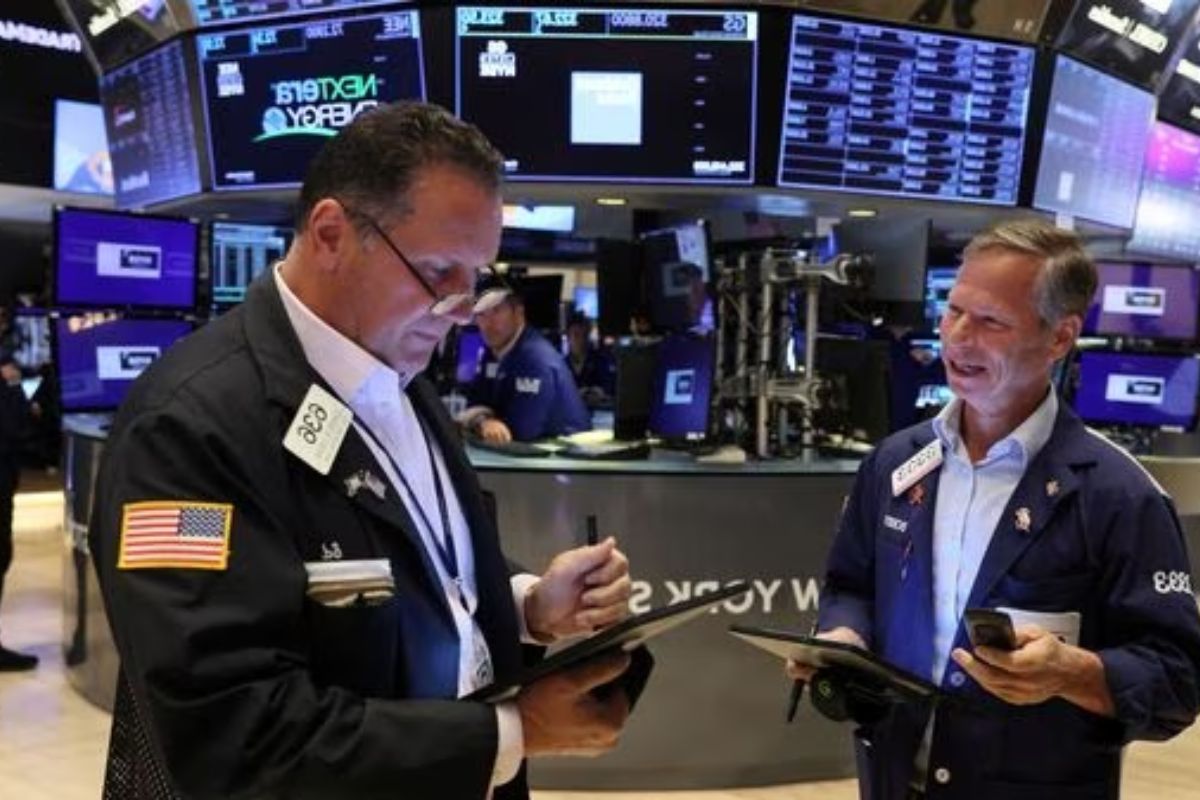Nasdaq Dips as Investors Brace: In an unexpected turn of events, the Nasdaq experienced a downward spiral as investors eagerly awaited the release of big tech reports and guidance from the Federal Reserve. This recent dip has left many market participants on edge, wondering if the much-anticipated earnings will live up to the hype.
With the tech sector at the forefront of the market’s attention, the stakes are high, and the potential ramifications could be far-reaching. As investors brace themselves for the storm that lies ahead, the question remains: will these reports and guidance be enough to steer the Nasdaq back on track, or are we in for a bumpy ride?
Key Takeaways
- Nasdaq experienced a downturn amid anticipation for big tech reports and Federal Reserve guidance.
- Uncertainties surrounding earnings reports and the Federal Reserve’s guidance led to the downturn.
- Investors are treading cautiously in the face of potential market turbulence.
- The exceptional performance of S&P 500 companies during earnings season reflects the strength of the US economy.
Market Overview: Nasdaq Downturn Amid Earnings Anticipation and Fed Meeting
Amidst heightened anticipation for corporate earnings releases and the Federal Reserve‘s monetary policy meeting, the Nasdaq experienced a downturn, setting the stage for a volatile market landscape. Market participants eagerly awaited the start of earnings releases from what’s been dubbed ‘the magnificent seven’, which includes tech giants such as Alphabet Inc and Microsoft Corp. However, the Nasdaq’s dip on Tuesday created a sense of unease among investors.
Also Read: Stock Market Soars to New Heights: SP 500 and Nasdaq Hit Highest Closes in Months
This downturn came as no surprise, given the uncertainties surrounding the upcoming earnings reports and the Federal Reserve’s monetary policy guidance. With the Nasdaq leading the decline, it is clear that investors are treading cautiously in the face of potential market turbulence.
As we dive deeper into the market overview, it becomes apparent that the anticipation surrounding corporate earnings and the Federal Reserve’s meeting is creating a highly volatile environment.
Sector Performance and Economic Indicators: Notable Trends and Unexpected Job Openings
As market participants eagerly awaited earnings releases from tech giants and the Federal Reserve’s monetary policy guidance, notable trends and unexpected job openings in economically sensitive sectors emerged, shedding light on the current state of the market. Here are four key takeaways:
- Underperformance of economically sensitive sectors: The Dow Transports, chips, and small caps all struggled to keep up with the broader market, indicating potential concerns about the strength of the economy.
- Surprising rise in job openings: The unexpected increase in job openings suggests that the market remains robust, reducing the likelihood of a rate cut by the Federal Reserve in March.
- Fed’s interest rate decision: The Federal Reserve’s decision on interest rates, expected to be between 5.25% and 5.50%, is eagerly anticipated as investors seek clues about the timing and number of potential rate cuts in 2024.
- Implications for the market: The performance of economically sensitive sectors and the strength of job openings provide valuable insights into the overall health of the market and can guide investment decisions in the coming weeks.
Earnings Season Highlights: Surpassing Expectations and Sector Variances
The ongoing earnings season has been met with resounding success, as an impressive 78% of S&P 500 companies have surpassed consensus earnings expectations, showcasing the resilience and profitability of these leading corporations.
This exceptional performance is a testament to the strength of the US economy and the ability of these companies to adapt and thrive in challenging times. Not only have these companies managed to exceed expectations, but analysts are also projecting a 5.5% growth in fourth-quarter earnings, surpassing the initial estimate of 4.7%.
This indicates a robust and vibrant market, driven by the innovation and dynamism of these corporations. As investors look forward to the remaining reports, they can expect more positive surprises and further evidence of the remarkable performance of the S&P 500 companies.
Stock Movements: UPS Disappointment, GM Soars, and Bank Upgrades
With the earnings season in full swing and investors eagerly anticipating the next wave of corporate reports, the stock market experienced notable shifts.
United Parcel Service (UPS.N) disappointed investors with an 8.2% slide after issuing a disappointing annual revenue forecast, impacting the transport sector.
On the other hand, General Motors (GM.N) soared 7.8% following a positive 2024 earnings outlook and promises of increased capital return to shareholders. This surge also had a positive effect on Ford Motor (F.N), which rose by 2.0%.
Meanwhile, Boeing Co (BA.N) shares dropped 2.3% ahead of its quarterly earnings report.
However, it was not all bad news. Citigroup (C.N) and Bank of America (BAC.N) each rose over 3% after receiving upgrades from Morgan Stanley, which bolstered the S&P 500 banks index by 2.1%.
These stock movements highlight the volatility and unpredictability of the current market climate. Investors must stay vigilant and carefully analyze each company’s performance to make informed decisions.
Market Indices and Individual Stock Performance: Numbers and Trends
Market indices and individual stock performance reveal the trends and numbers that shape the current state of the stock market.
The S&P 500 ended the day with a minimal decline, while the Nasdaq Composite Index fell by 0.76% and the Dow Jones Industrial Average rose by 0.35%.
Financials led the way with a 1.2% gain, followed by a 1.01% increase in energy. Despite the mixed performance of the indices, advancing issues outnumbered falling ones in the S&P 500. However, across the U.S. stock market, declining stocks surpassed rising ones.
The S&P 500 recorded 80 new highs, while the Nasdaq saw 126 new highs and 75 new lows. Trading volume on U.S. exchanges was relatively light compared to the 20-session average.
These numbers and trends reflect the cautious sentiment among investors as they brace for Big Tech reports and Federal Reserve guidance.
Conclusion Of Nasdaq Dips as Investors Brace
The Nasdaq experienced a downturn as investors eagerly awaited earnings reports from major tech companies and guidance from the Federal Reserve.
The market saw notable trends in sector performance and unexpected job openings, while earnings season highlighted both surpassing expectations and sector variances.
Stock movements included disappointment from UPS, a soaring GM, and bank upgrades.
Overall, the market indices and individual stock performance showed various numbers and trends, reflecting the anticipation and volatility of the current economic landscape.
Our Reader’s Queries
Q1 Who owns Nasdaq?
A The NASDAQ, the second-largest stock exchange globally by market capitalization, is a U.S.-based stock market. Its acronym, NASDAQ, stands for the National Association of Security Dealers Automated Quotations. NASDAQ is owned and operated by its parent organization, NASDAQ Inc.
Q2 How does Nasdaq make profit?
A Nasdaq generates its revenue primarily through fees associated with the following services: Market services, providing investors with access to diverse markets, and Investment intelligence, offering data, indices, and investment analytics tailored for financial institutions, brokers, and asset managers.
Q3 What is Nasdaq vs NSE?
A The NYSE operates as an auction market utilizing specialists, also known as designated market makers, whereas Nasdaq functions as a dealer market with numerous market makers competing against each other.




